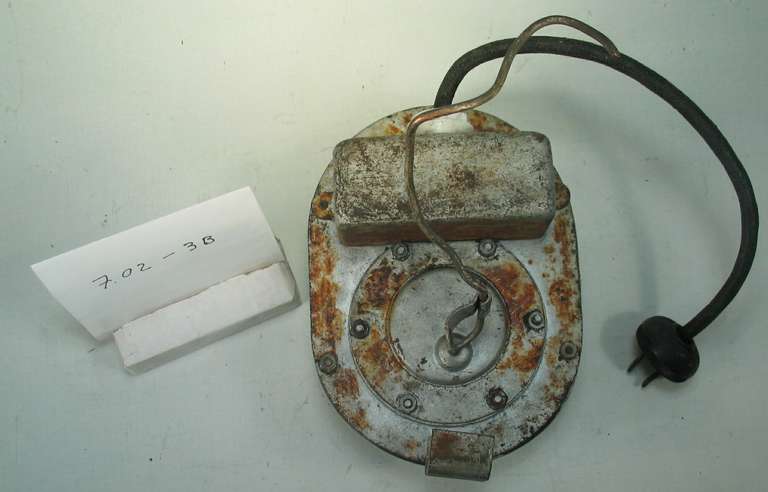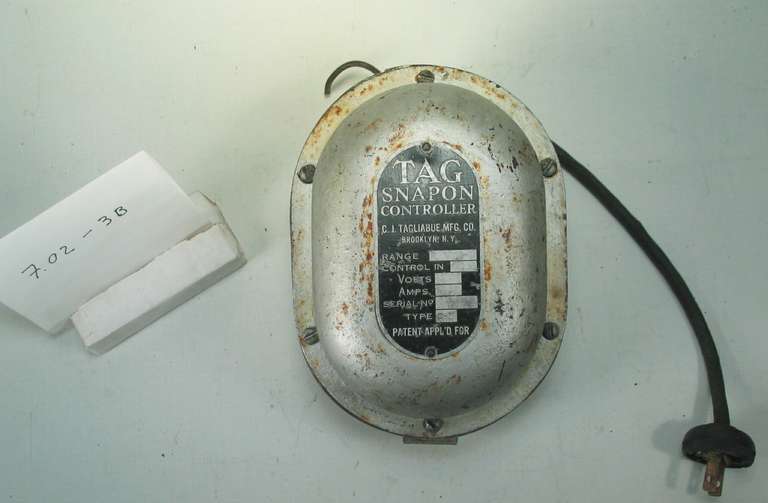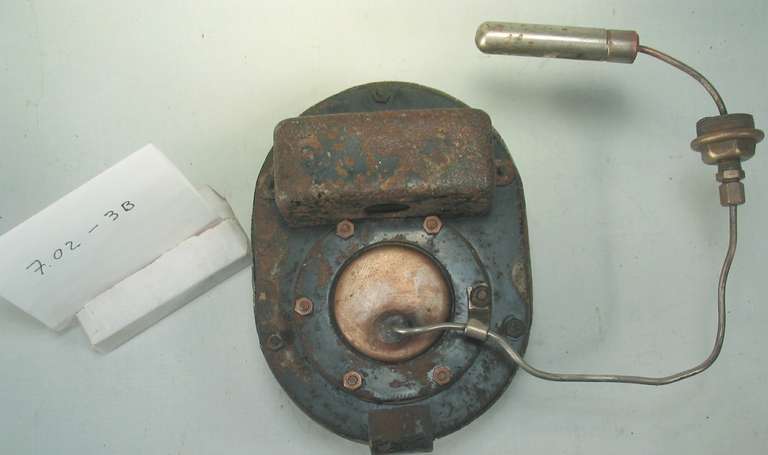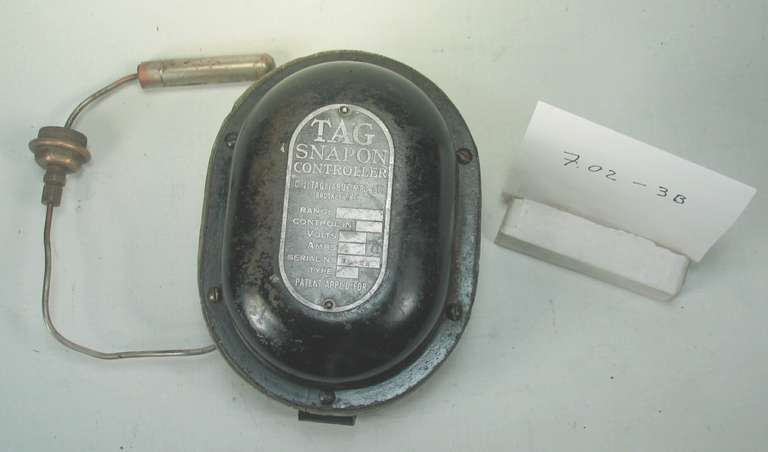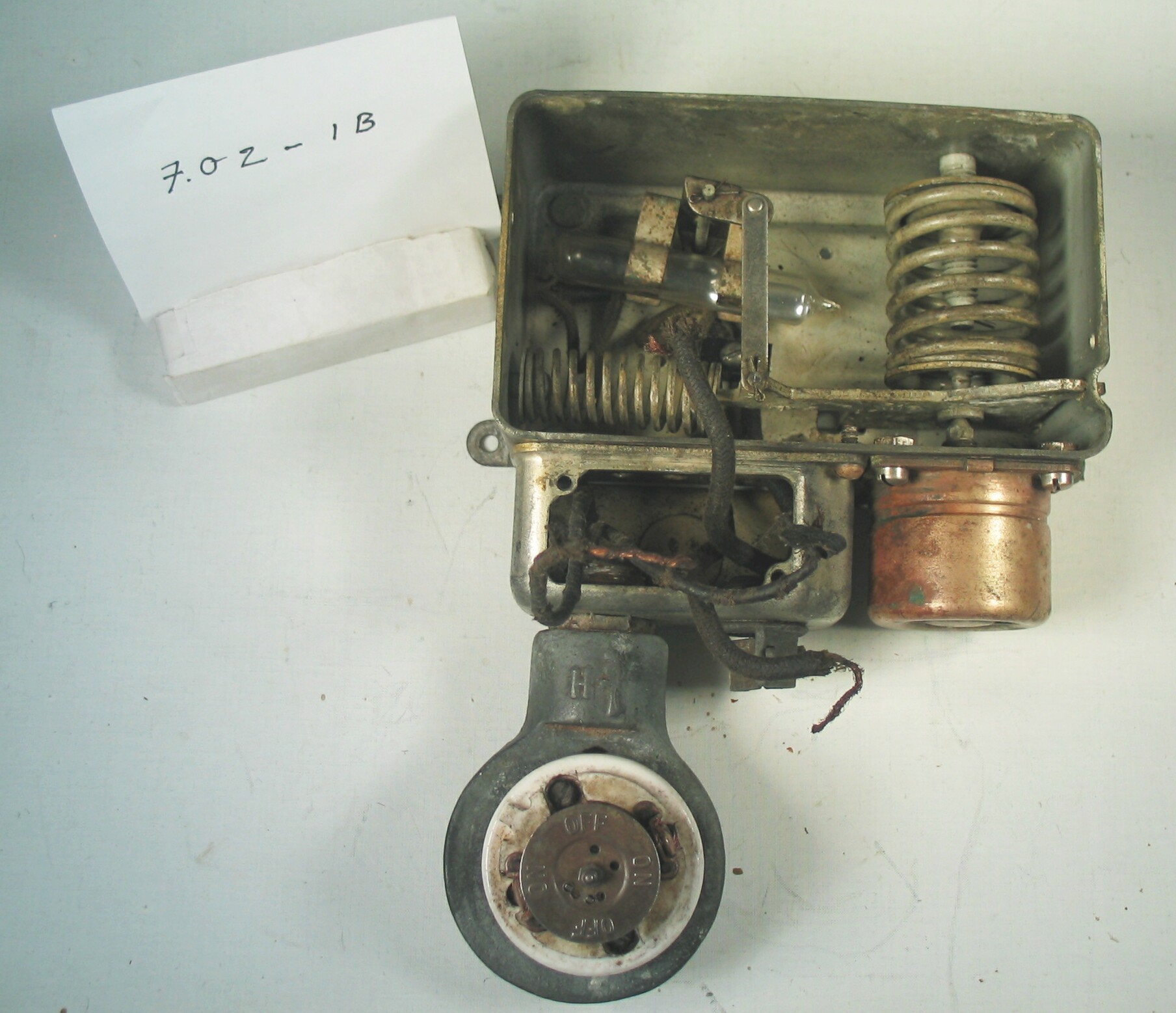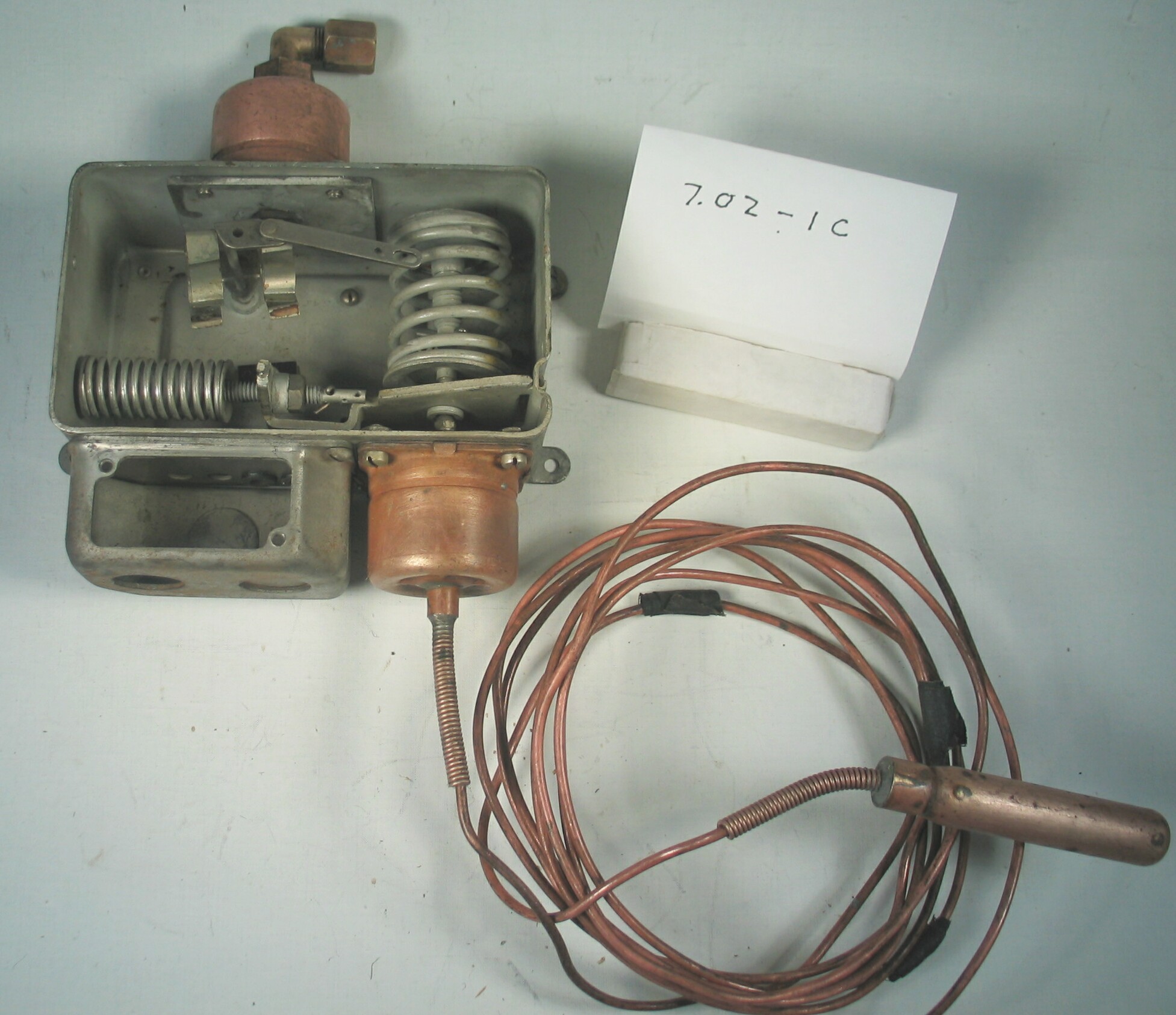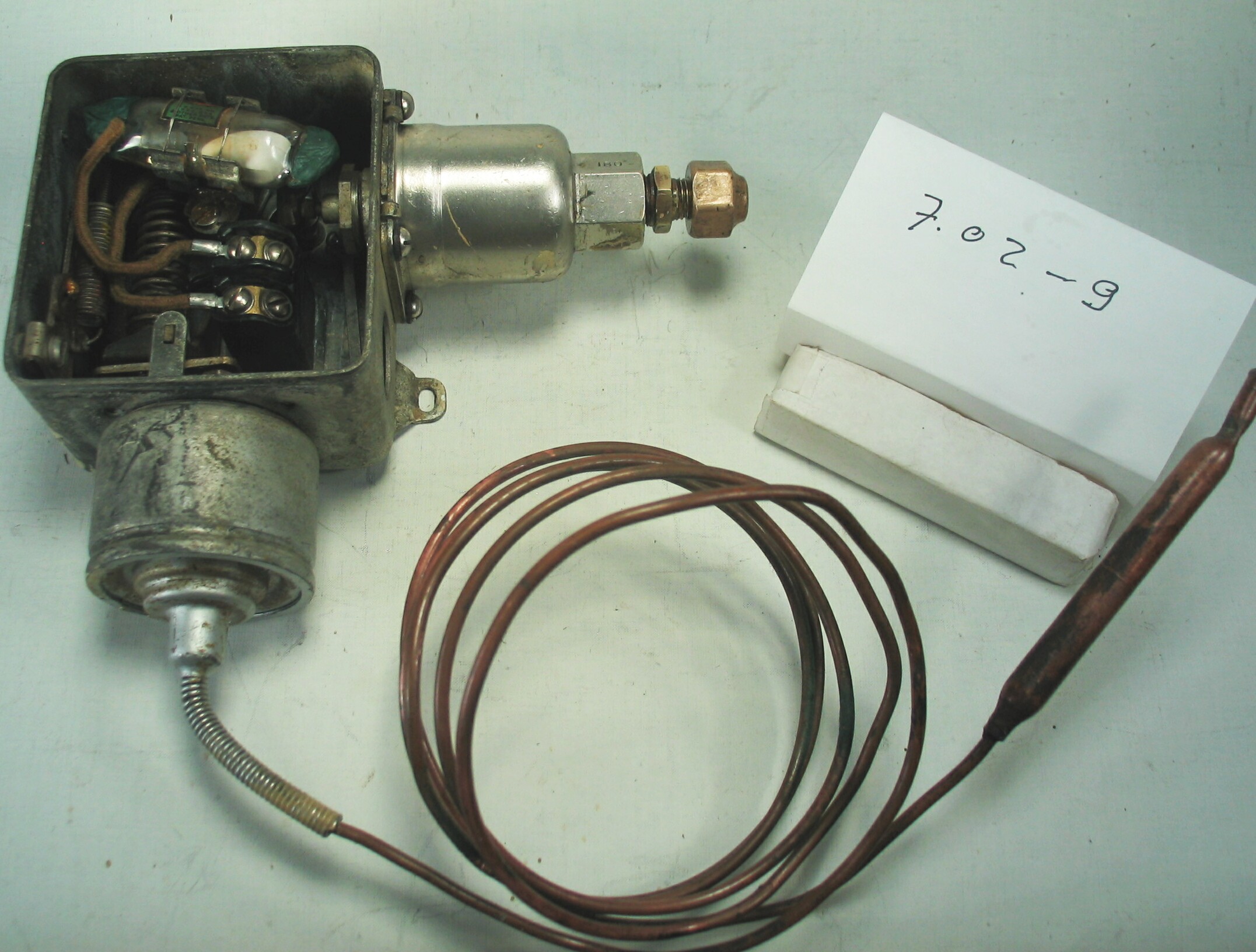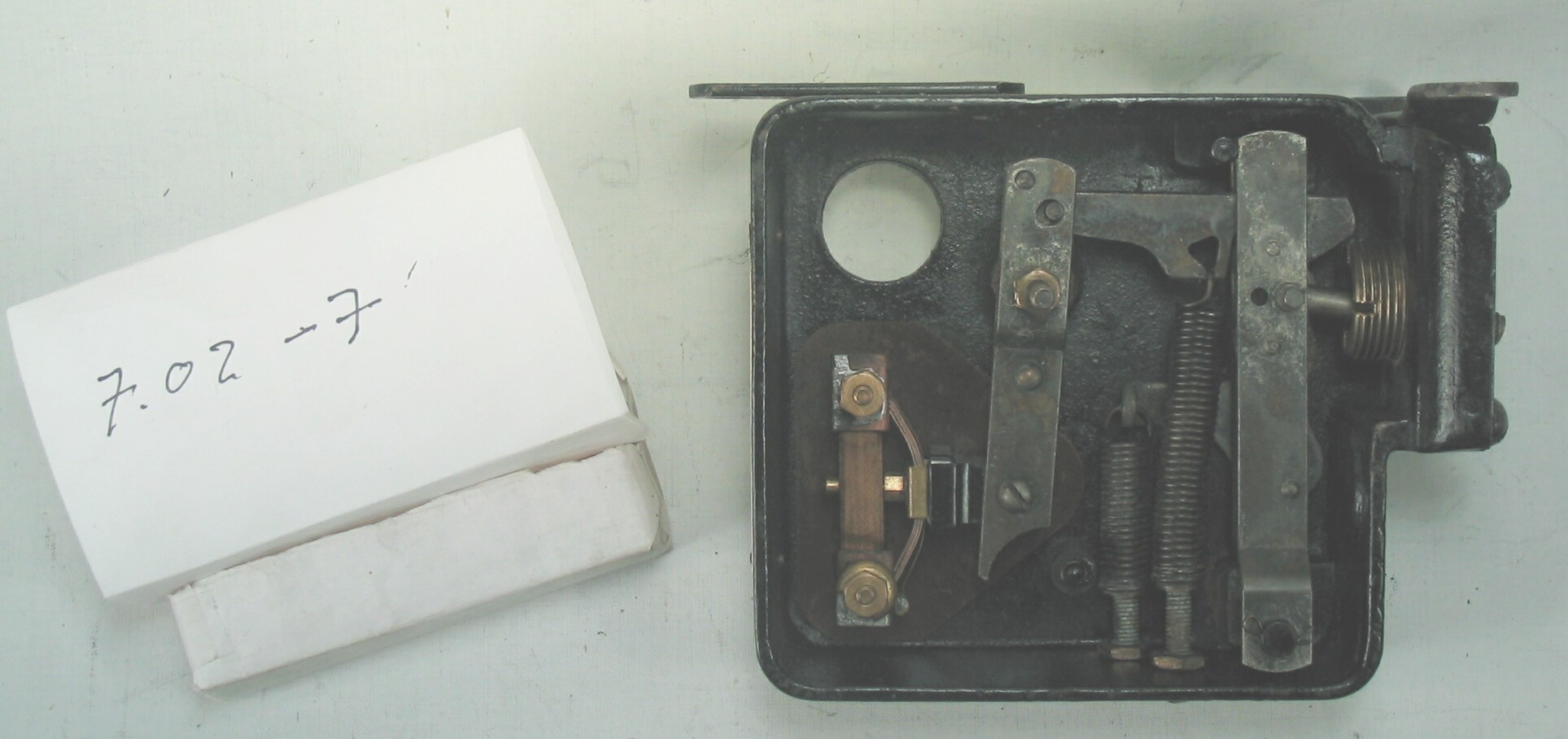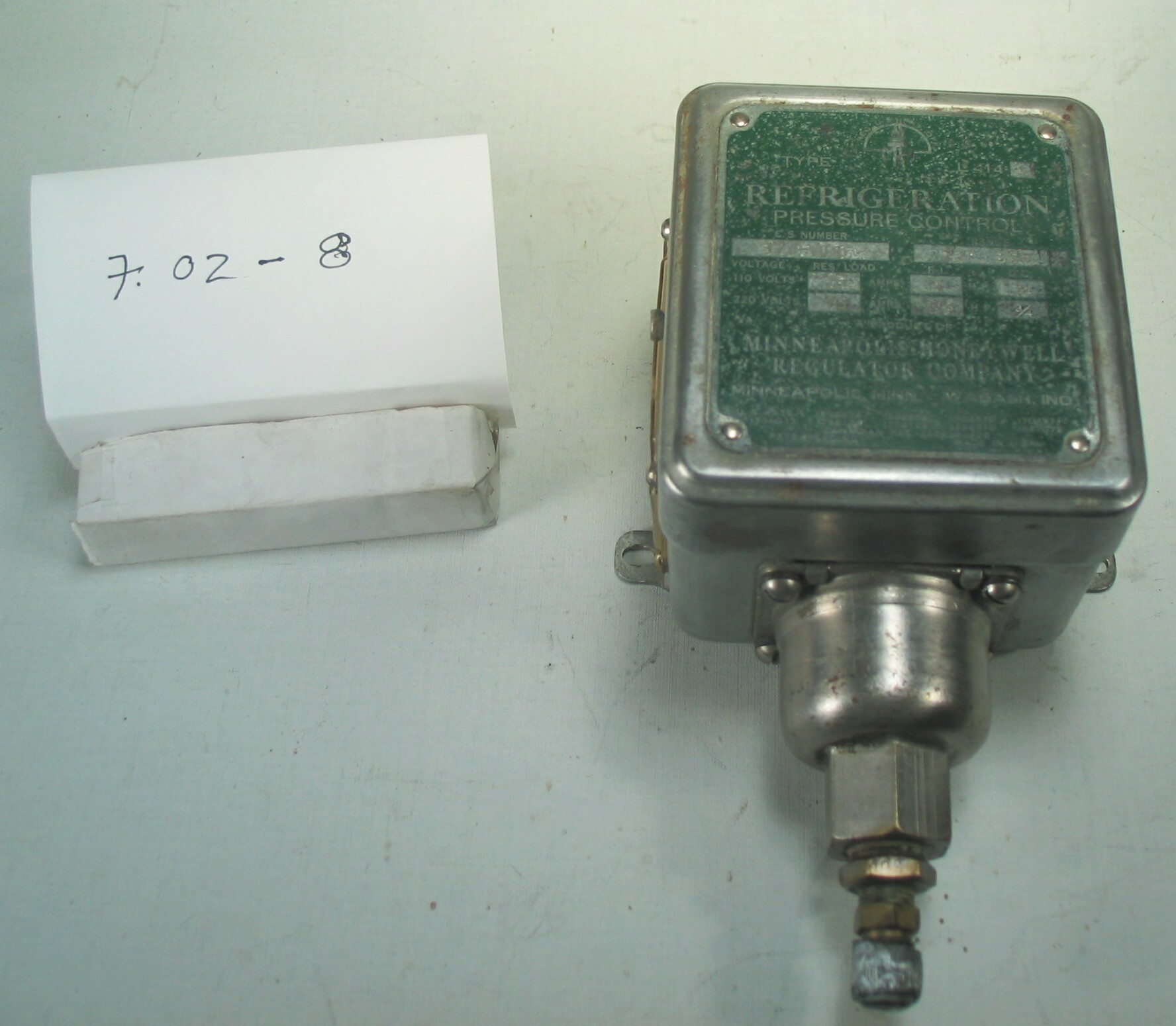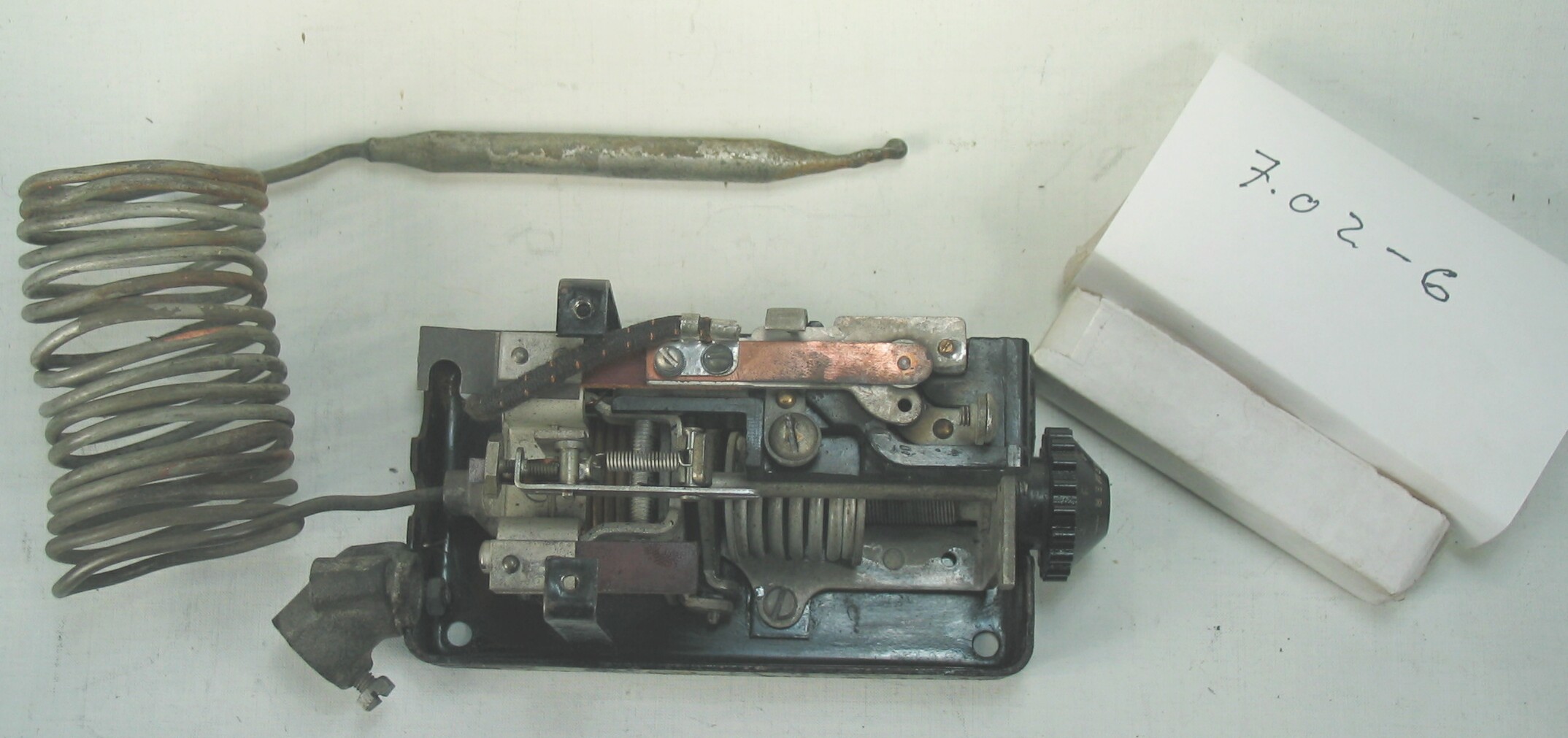7.02-3B: Tag Snapon Controller 1928 Automatic Temperature Control
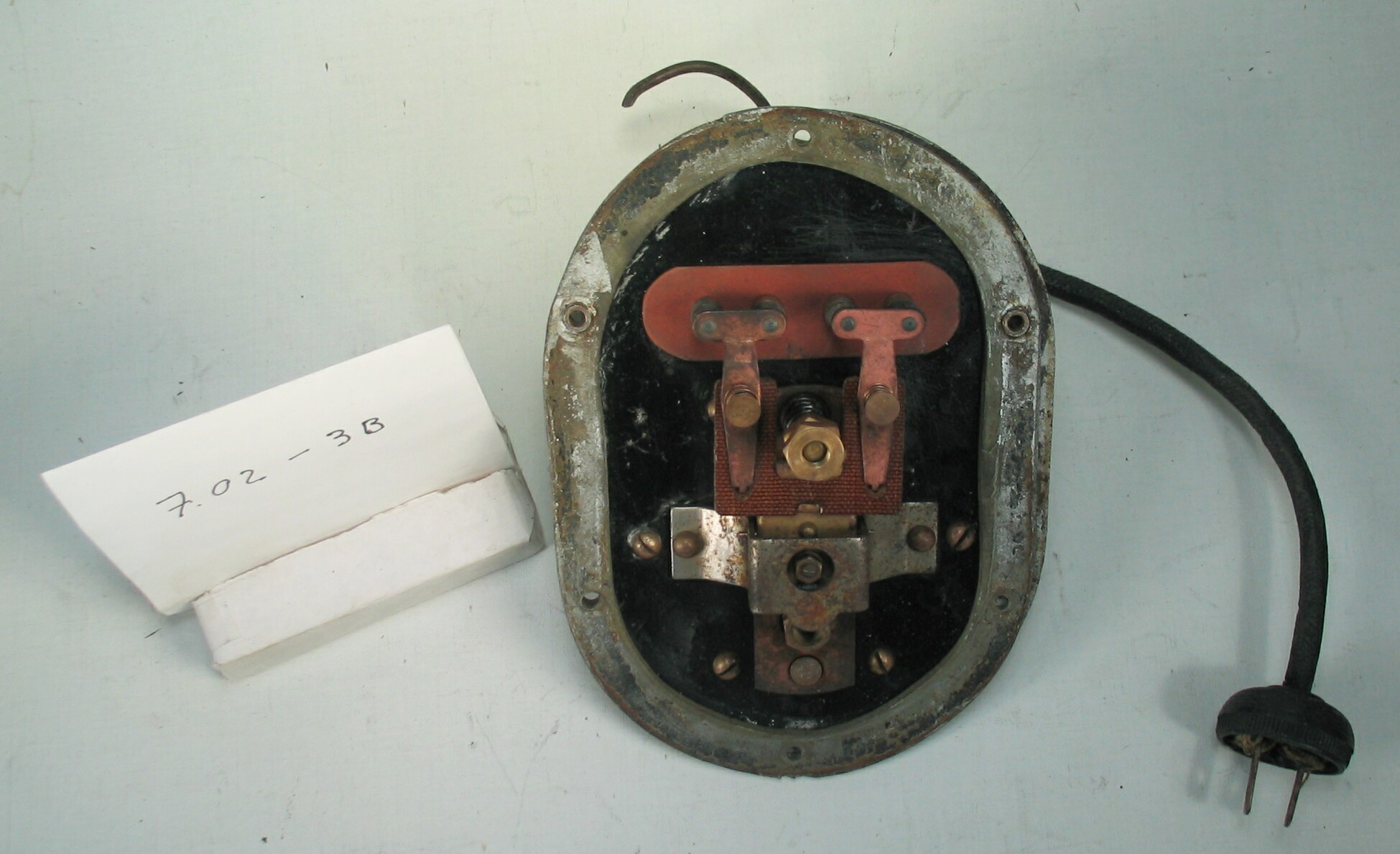
| HHCC Accession No. 2006.034 | HHCC Classification Code: 7.02-3B |
|---|
Description:
An early automatic temperature control for commercial refrigeration applications, employing a ‘silver dollar’ style hydraulic power element, capillary tube sensor and bulb with liquid tight dealing gland; line-voltage, four pole open contact switch, mounted in heavy two-piece, screw assembled, cast enclosure with rubber sealing gasket, Tag Snapon, Circa 1928
One of a set of two controllers, demonstrating variations in design, engineering and application by the manufacturer, as well as the various effects of natural ageing in use, disuse, abuse and abandonment.
Group:
7.02 Refrigerating and Air Conditioning Pressure and Temperature Controls - Commercial
Make:
Tag Snapon Controller
Manufacturer:
C. J. Tagliabue Mfg Co, Brooklyn N. Y.
Model:
Un marked
Serial No.:
1-22??
Size:
5 x 3 x 7 in. high
Weight:
8 lbs.
Circa:
1928
Rating:
Exhibition, education, and research quality, illustrating the design, engineering and construction of a variant of early refrigeration, remote sensing temperature controls, adapted for special applications and produced by a little known manufacturer.
Patent Date/Number:
Provenance:
From York County (York Region) Ontario, once a rich agricultural hinterlands, attracting early settlement in the last years of the 18th century. Located on the north slopes of the Oak Ridges Moraine, within 20 miles of Toronto, the County would also attract early ex-urban development, to be come a wealthy market place for the emerging household and consumer technologies of the early and mid 20th century.
This artifact was discovered in the 1950’s in the used stock of T. H. Oliver, Refrigeration and Electric Sales and Service, Aurora, Ontario, an early worker in the field of agricultural, industrial and consumer technology.
Type and Design:
hydraulic element, remote sensor water tight sealing gland allowing immersion of temperature sensing bulb in liquid bath
Construction:
- heavy cast enclosure with bolted construction, readily serviceable
Material:
Special Features:
Brass, screw threaded, water tight sealing gland allowing immersion of temperature sensing bulb in liquid bath
‘Silver dollar’ style hydraulic power element Cast enclosure overcoated with black paint
Accessories:
Capacities:
Performance Characteristics:
Operation:
Control and Regulation:
Targeted Market Segment:
Consumer Acceptance:
Merchandising:
Market Price:
Technological Significance:
Representative of one of the broad range of approaches to the engineering, design and construction of temperature controllers being experimented with by ‘me too manufactures’. It was a period of rapid growth in what appeared to be an expanding, economically attractive market place
The heavy, open style, four pole switching marked the controller as able to handle larger HP applications than the mainstream of tilting mercury bulb controllers of the time ‘ although current and HP ratings are not shown The unusual attention given here to robust, waterproof [drip proof] construction and other design attributes is symptomatic of the period. It was one in which, in the absence of field-based experience and codified engineering data, manufactures tended, in many ways, to over design. The effects of progressive simplification can be seen in other controllers in the 7.02 series.
Industrial Significance:
See above
Socio-economic Significance:
Socio-cultural Significance:
Of special interest in this model by Tag Snapon is the apparent adaptation of their basic controller for commercial/industrial applications involving liquid bath temperature control. It was a period in which low pressure mechanical refrigeration equipment was making many new things possible, facilitating food processing and storage, as well as industrial process applications, here-to-for not possible. Life for Canadians was about to change dramatically, among other things in the range and quality of food and other consumer products to be enjoyed.
See also notes ID # 155, Social-cultural significance
Donor:
G. Leslie Oliver, The T. H. Oliver HVACR Collection

